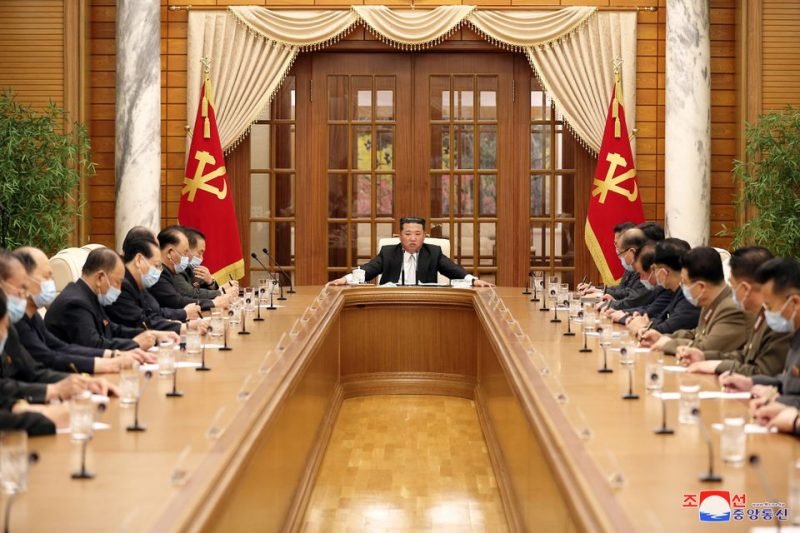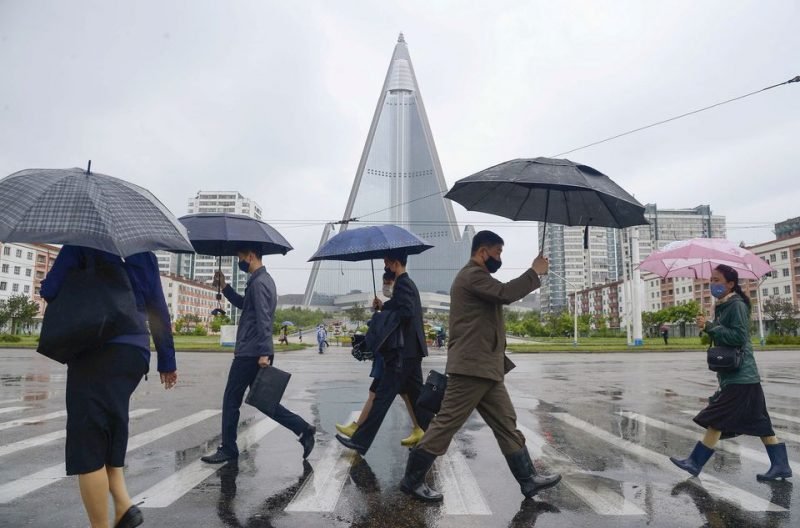N.Korea reports first COVID-19 outbreak, orders lockdown in “gravest emergency”

North Korea confirmed its first COVID-19 outbreak on Thursday, calling it the “gravest national emergency” and ordering a national lockdown, with state media reporting an Omicron variant had been detected in Pyongyang.
The first public admission of COVID infections highlights the potential for a major crisis in a country that has refused international help with vaccinations and kept its borders shut.
As of March, no cases of COVID-19 have been reported, according to the World Health Organization, and there is no official record of any North Koreans having been vaccinated.
“A most serious emergency case of the state occurred: A break was made on our emergency epidemic prevention front where has firmly defended for two years and three months from February, 2020,” official KCNA news agency said.
Samples taken on May 8 from people in Pyongyang who were experiencing fevers showed a sub-variant of the Omicron virus, also known as BA.2, the report said, without providing details on case numbers or possible sources of infection.
The report was published after North Korean leader Kim Jong Un led a Workers’ Party meeting on Thursday to discuss responses to the outbreak
Kim ordered all cities and counties of the country to “strictly lock down” their regions to prevent the spread of the coronavirus and said emergency reserve medical supplies would be mobilised, according to KCNA.
“The state epidemic prevention work shall be switched over to the maximum emergency epidemic prevention system,” KCNA said.
Although the North has never before confirmed a single coronavirus infection in the country, officials in South Korea and the United States have doubted that the country is COVID-free, as cases of the Omicron variant were widely reported in neighbouring South Korea and China.
The isolated North has enforced strict quarantine measures, including border lockdowns, since the pandemic began in early 2020. In July that year, Kim declared an emergency and imposed a lockdown on Kaesong, near the inter-Korean border, for three weeks after a man who defected to the South in 2017 returned to the city showing coronavirus symptoms.
According to the latest data from the World Health Organization (WHO), 64,207 of North Korea’s more than 24.7 million people received COVID-19 testing; all had been found negative as of March 31.
North Korea has declined shipments of vaccine from the COVAX global COVID-19 vaccine-sharing programme and the Sinovac Biotech vaccine from China, suggesting no civilians may have been vaccinated.
South Korea’s presidential office told Reuters that President Yoon Suk-yeol, who was sworn in on May 10, will not link humanitarian aid to the political situation, opening the door to providing support to the North.
The news of the outbreak comes amid reports of preparations for an imminent nuclear test by the North, which has also aggressively pursued a ballistic missile programme, according to U.S. and South Korean officials.

No vaccine, no medical infrastructure
Thursday’s KCNA report said Kim told the Workers’ Party meeting that the latest emergency quarantine system’s purpose is to stably control and manage the spread of the coronavirus and quickly heal infected people to eliminate the source of transmission in the shortest period.
A failure to contain infections could be an “unprecedented crisis for the Kim Jong Un regime,” professor of North Korean studies at Kyungnam University in South Korea, Lim Eul-chul, said.
“Given a more inferior vaccination situation and weaker testing capacity and public health infrastructure compared to China, plus the lack of intensive care units, there’s potential for scores of casualties,” he said.
Cheong Seong-chang of the Sejong Institute noted that North Korea’s nationwide lockdown had the potential to be immensely disruptive.
“With time, North Korea is likely to face severe food shortages and, as China is experiencing now, massive confusion,” he said.
South Korea’s central bank in an annual report in July 2021 said the North’s economy suffered its biggest contraction in 23 years in 2020, weighed down by COVID border controls, U.N. sanctions and bad weather.
Professor Yang Moo-jin of the University of North Korean Studies in Seoul said the fact that Kim called a party politburo meeting at dawn and state media immediately published the deliberations shows the urgency of the situation. It could be an indirect plea to the international community for help, he added.
A South Korea-based website that monitors activities in Pyongyang said this week that residents have been told to return home and remain indoors because of a “national problem” without offering details.
Earlier on Thursday, Chinese state television reported North Korea has required its people to stay at home since May 11 as many of them have “suspected flu symptoms”, without referring to COVID-19.
The main crossing between China’s Dandong and the north-western North Korean town of Sinuiju was closed in April because of the COVID situation in the Chinese city, China said.
Reporting by Soo-hyang Choi and Joori Roh in Seoul, Ryan Woo in Beijing; Editing by Jack Kim and Gerry Doyle



















